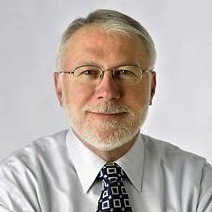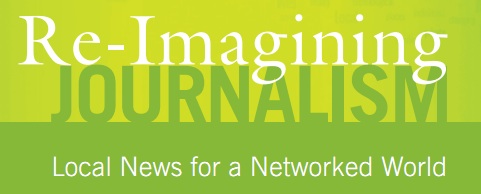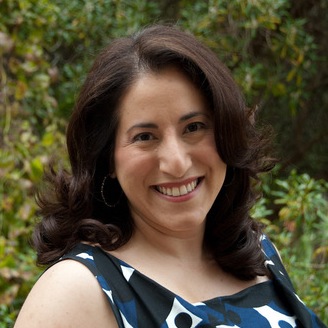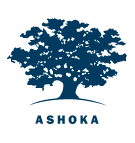Blog:
2012: What we know now on building public trust, raising money and a free press powered by the people

Was 2012 prosperous for publishers? The four-part series continues, with this third installment offering key lessons from three well-respected practitioners known for thinking outside the box. Mike Fancher, veteran news business strategist; Lila LaHood, director of operations and development at San Francisco Public Press; and Keith Hammonds, director of Ashoka’s Knowledge Initiative, offer their unique perspectives. Fancher sums it up as such: “News businesses – emerging or legacy, large or small – won’t be relevant and economically viable if journalists don’t feel a personal responsibility to make public engagement a core tenet of their work.” LaHood offers insights from the nonprofit trenches: “We learned that we weren’t giving our supporters enough different opportunities to support our brand of local public-interest journalism.” And Hammond sees the opportunity to act as a changemaker is to “produce content that’s relevant; connect it to mechanisms that help citizens and communities make change; articulate a value proposition and (not least) ask to be paid.” See their contributions below for useful context you can compare your experience against. Check back next week as we offer the fourth and final post in this series, with contributions from Josh Stearns of Free Press, Mark Glaser of PBS Media Shift and Dan Moulthrop of The Civic Commons.
Engage!

Mike Fancher: “The future can be far better than … the past.”
Mike Fancher, former executive editor, The Seattle Times, author of “Re-Imagining Journalism: Local News for a Networked World”
How would journalism be different if we were starting with a blank pad and the new possibilities of interactive technology?
Some of journalism’s values and purposes would remain the same:
- Serve the public ahead of any other interest.
- Find the truth and report it.
- Be accurate, fair and accountable.
- Speak truth to power and give voice to the voiceless.
But, as solid as those values are, they have never been achieved fully or consistently by professional journalism. The public isn’t satisfied with journalism’s success in any of those aspirations. People simply don’t trust journalists to live up to the values and standards they espouse.
I believe journalism needs a new ethic of public trust through public engagement. Complete public engagement is the surest path to producing more journalism that is better, more accurate, more thorough, more diverse and more trusted than ever. And, public engagement is an essential element of building an economically sustainable news system.
Here is the most important thing I learned in 2012:
News businesses – emerging or legacy, large or small – won’t be relevant and economically viable if journalists don’t feel a personal responsibility to make public engagement a core tenet of their work.
Individually and collectively, we journalists must feel motivated to connect with people and communities in as many ways as possible. We should seize every opportunity to build and nurture relationships and to help people connect with each other.
We must utilize the potential of interactivity and networking to let the public participate as true partners in every aspect of our work. We must transform journalism to be truly of, by and for people.
The journalism of the future can be far better than the journalism of the past.
 Mike Fancher, the executive editor at The Seattle Times for 20 years before retiring in 2008 and the author of “Re-Imagining Journalism: Local News for a Networked World,” remains active in the journalism world. In July 2011, he wrote this in an op-ed piece for the St. Louis Post-Dispatch: “If journalism didn’t already exist, we wouldn’t create it in the form that is has been practiced for the past century.
Mike Fancher, the executive editor at The Seattle Times for 20 years before retiring in 2008 and the author of “Re-Imagining Journalism: Local News for a Networked World,” remains active in the journalism world. In July 2011, he wrote this in an op-ed piece for the St. Louis Post-Dispatch: “If journalism didn’t already exist, we wouldn’t create it in the form that is has been practiced for the past century.
“The values, functions and purposes of journalism are as important as ever, but journalism must be re-invented as an interactive endeavor if it is to remain relevant and accountable. Journalism must be re-imagined for a networked world in which people use technology for themselves to do things they once relied on journalists to do for them.
“Digital technology enables news consumers to participate meaningfully in all of the traditional functions and purposes of journalism. Therefore, public engagement is at the heart of re-inventing journalism, but it requires that the people seize the opportunity.”
Ask for money as many ways as you can
Lila LaHood, Publisher, San Francisco Public Press

Lila LaHood: “Maintain a multifaceted approach to recruiting … donors.”
When you’re running a nonprofit news organization, it can seem like you’re always asking people for money.
The reality is, you might not be asking them often enough.
We made significant strides with our membership program at the San Francisco Public Press this year. Along the way, we learned that we weren’t giving our supporters enough different opportunities to support our brand of local public-interest journalism.
Of course we have run year-end campaigns, hosted fundraisers and promoted our membership program on our website, through social media and in our quarterly print newspaper. We provided a “donate” button on the top of our website and a “become a member” link at the bottom of every email newsletter. Plenty of readers do click and make generous donations online. But these features we considered calls to action had turned into boring pieces of digital furniture. They’re necessary but not sufficient for recruiting the broad base of public support we need.
What I’ve learned this year is how important it is to maintain a multifaceted approach to recruiting individual donors. Sometimes small, obvious efforts make the biggest difference. This fall, for the first time we printed donation envelopes. Why hadn’t we done that before? After operating on such a tight budget for so long, spending a couple hundred dollars on printed envelopes seemed like a luxury we couldn’t afford. And yet, as soon as we started using them, those envelopes drew donations that more than covered their cost.
We just published our winter edition and took another new step. We ordered more envelopes and asked our printer to insert them into the newspaper. Very old school, I know. But after one day on newsstands, they’ve already started coming back to us.
Print isn’t dead. And neither are hand-written donation checks.
 Michael Depp of NetNewsCheck describes how Lila LaHood and San Francisco Public Press founder and Executive Director Michael Stoll are taking on the challenges of financial survival:
Michael Depp of NetNewsCheck describes how Lila LaHood and San Francisco Public Press founder and Executive Director Michael Stoll are taking on the challenges of financial survival:
“… They think of their work as building an ark, Stoll said, and what will keep it afloat amid so many other area outlets competing for the same eyeballs and dollars is its unique proposition. …
“‘We made a strategic decision that what we specialize in is depth, explanation, accountability reporting, and to the extent that we can get a real scoop, investigative,’ he said. LaHood added that its singular focus on the city of San Francisco itself in a market where most of the competition takes either a hyperlocal or Bay Area-wide approach will further help.
Kevin Davis, CEO and executive director of the Investigative News Network of nonprofit outlets, agreed. “‘They’re on the ground in San Francisco with a non-advertising model based on community journalism — that’s their differentiation.’”
“A free press to make you powerful”
Keith Hammonds, Director of Ashoka’s Knowledge Initiative

Keith Hammonds: “Information alone is a commodity.”
Som Nath Aryal is an Ashoka Fellow in Madanpokhara, a village in an almost unimaginably beautiful region of Nepal where 40% of people live in poverty. Aryal is a social entrepreneur who leads two community radio stations. He’s not a news guy; he taught school for 33 years. He understands that information alone is a commodity. The stations create value if they recognize people’s needs and engage them to drive solutions.
What’s special is the way Aryal positions content for his listeners. He spends full days visiting villages in the valley (often traveling by foot), speaking about the importance of community in this fragile democracy, and explaining why people must stay informed: “Without good citizens, you can’t have a good democracy. So now, we are establishing a free press here to make you [his emphasis] powerful.”
Aryal created a network of village news reporters and established committees of youth, women, farmers and other interest groups to both organize community activities and to participate in the stations’ governance. The committees’ work – health clinics, public meetings, building projects – gets aired on the radio, creating an iterative loop of news, community, and action. Information begets solutions; solutions get reported, reinforcing engagement.
This is compelling enough that villagers pay to keep the stations. Youth committee members ask for donations of rice and timber. Sold at market, a quarter of the proceeds are reserved for projects benefiting the community; the rest, perhaps $50 or $60 per village, goes to the stations. Remarkably, according to people I asked, nearly everyone – including the very poor – gives something.
Som Nath’s formula is foundational for news sustainability: Produce content that’s relevant; connect it to mechanisms that help citizens and communities make change; articulate a value proposition and (not least) ask to be paid.
 Ashoka’s Beverly Schwartz, one of 16 Ashoka contributors to the nonprofit’s blog on Forbes, writes that there’s much to look forward to in 2013:
Ashoka’s Beverly Schwartz, one of 16 Ashoka contributors to the nonprofit’s blog on Forbes, writes that there’s much to look forward to in 2013:
“2013 is looking like a positive year for catapulting the field of social entrepreneurship into the creation of a world where everyone is a changemaker. Our global wish is to help create a world where every citizen feels empowered to get involved in social change; change that is grounded in empathy and driven by the belief that indeed intractable social problems can be solved, if everyone feels that their participation in the process is important.
“If 2012 is any indication of … how 2013 will shape up, we see opportunity, inspiration, empathy and attention to community as core principles that will help to establish more of the world’s population as full economic citizens. Fiscal cliffhangers and political unrest may be on our immediate minds, but it just might take an “Everyone a Changemaker” world to mitigate those occurrences in the future. Now, wouldn’t that be a great wish come true for the New Year?”











Weigh In: Remember to refresh often to see latest comments!
0 comments so far.